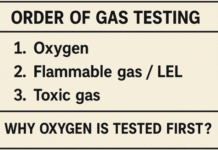When it comes to safety practices, there are various acronyms and terms that professionals in the field need to be familiar with. One such acronym that has gained prominence in recent years is ESG. In this article, we will explore the full form of ESG in the context of safety and its significance.
Contents
Understanding ESG
ESG stands for Environment, Social, and Governance. Originally, this term was used in the realm of sustainable investing to evaluate companies based on their environmental, social, and governance practices. However, it has now expanded its scope to encompass safety practices as well.
The Components of ESG in Safety
Let’s break down the three components of ESG in the context of safety:
1. Environment
The environment aspect of ESG in safety refers to the physical surroundings and conditions in which work activities take place. It involves assessing and managing potential hazards that may arise from the workplace environment. This includes factors such as air quality, noise levels, temperature, and ergonomics. Implementing measures to reduce environmental risks can help create a safer and healthier work environment for employees.
2. Social
The social aspect of ESG in safety focuses on the well-being and welfare of employees. It involves promoting a positive safety culture within the organization, ensuring effective communication and training, and providing support systems for mental and physical health. This component also includes addressing issues such as diversity, equity, and inclusion in the workplace, as these factors can significantly impact safety outcomes.
3. Governance
The governance aspect of ESG in safety relates to the policies, procedures, and systems that govern safety practices within an organization. It involves establishing clear lines of responsibility, accountability, and decision-making processes related to safety. Effective governance ensures that safety measures are implemented consistently and that there is a framework for continuous improvement.
The Importance of ESG in Safety
Integrating ESG principles into safety practices can have several benefits for organizations:
1. Enhanced Risk Management
By considering environmental, social, and governance factors, organizations can identify and mitigate safety risks more effectively. This proactive approach to risk management can help prevent accidents, injuries, and occupational illnesses, thereby reducing the financial and reputational impact on the organization.
2. Improved Employee Engagement
When employees see that their organization prioritizes their well-being and safety, it fosters a sense of trust and engagement. Incorporating ESG principles into safety practices demonstrates a commitment to creating a safe and healthy work environment, which can boost employee morale and productivity.
3. Compliance with Regulations
Many regulatory bodies now emphasize the importance of ESG factors in safety practices. By integrating ESG principles into safety management systems, organizations can ensure compliance with relevant regulations and standards.
4. Positive Reputation
Adopting ESG principles in safety practices can enhance an organization’s reputation, both internally and externally. It demonstrates a commitment to responsible and sustainable business practices, which can attract top talent, investors, and customers.
ESG stands for Environment, Social, and Governance. It encompasses evaluating and integrating environmental, social, and governance factors into safety practices. By incorporating ESG principles into safety management systems, organizations can enhance risk management, improve employee engagement, ensure regulatory compliance, and build a positive reputation. Prioritizing ESG in safety is not only beneficial for the organization but also for the well-being and safety of its employees.





